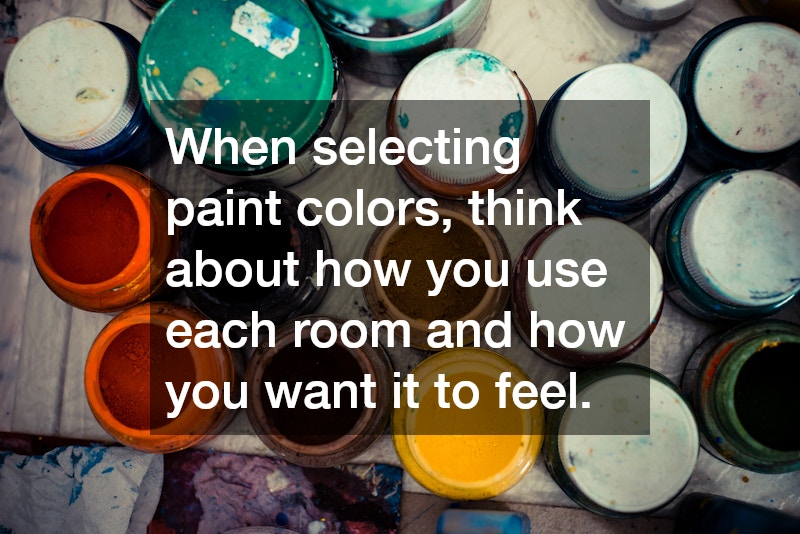Before diving into paint samples, it’s essential to understand the role that color plays in setting the mood of your home. Different colors can evoke various emotions, which is why choosing the right hue can significantly impact how a space feels. Warm colors like reds and oranges can create an energetic vibe, ideal for gathering spaces like living rooms or kitchens. On the other hand, cool tones such as blues and greens tend to soothe, making them perfect for bedrooms or bathrooms. Considering the psychological impact of color helps you align your design goals with the atmosphere you want to create.
When selecting paint colors, think about how you use each room and how you want it to feel. For spaces meant for relaxation, you might opt for softer, muted palettes that offer a calming effect. In areas where you entertain guests, bolder and more vibrant colors can help energize the space. Observing how color affects your mood in different environments can offer valuable insights when choosing paint for similar settings in your home. It’s crucial to weigh the functional aspects of a room along with its aesthetic, ensuring that your choice in paint colors complements its purpose. This approach not only enhances your daily living experience but also adds cohesion to your overall interior design.
Pairing your understanding of color psychology with the physical attributes of your home can guide your selections further. Large, south-facing rooms might benefit from cooler tones that counterbalance natural sunlight, while smaller, north-facing spaces could be enlivened by warm hues. Consider how the natural light in a room interacts with potential paint choices throughout the day. Light variation can dramatically alter a color’s appearance, so testing samples at different times is advised. By combining color psychology with the specifics of your living space, you achieve a harmonious blend that reflects both personal preference and strategic design.
Exploring Color Schemes
Once you grasp the basics of color psychology, explore various color schemes to find your ideal palette. One popular method is the monochromatic scheme, which uses varying shades of a single color to create a cohesive yet dynamic look. This approach adds depth and visual interest while maintaining a sense of unity within a space. To achieve this, utilize swatches from your chosen paint supply store, examining how slight variations can impact the room’s ambiance. Monochromatic schemes are particularly effective in modern and minimalist designs, where simplicity and elegance are paramount.
Alternatively, consider complementary color schemes, which involve colors opposite each other on the color wheel. This technique brings a vibrant contrast, ideal for those who want a bold statement in their rooms. For instance, pairing blues with oranges or purples with yellows can enliven a space while maintaining harmony. When utilizing complementary colors, balance is key, so use one as the dominant hue and the other as an accent to prevent overwhelming the room. This balance creates a visually appealing environment that’s both stimulating and balanced, perfect for living areas.
Analogous color schemes, which pair adjacent colors on the color wheel, offer another strategic option. These combinations provide a serene and comfortable look, often found in nature, making them aesthetically pleasing and easy on the eyes. For instance, blue, green, and teal can create a serene aquatic theme that imbues tranquility. When exploring these schemes, gather samples from your paint supply to ensure the chosen hues blend well with your existing decor. By thoughtfully selecting an analogous color scheme, you establish a cohesive design that flows naturally throughout your home.
Sampling and Testing Paint Colors
After narrowing down your color preferences, it’s crucial to test these shades in the rooms they’re meant for. A small paint chip can look vastly different when it covers an entire wall, interacting with lighting and surrounding decor. Most paint supply retailers offer sample pots, allowing you to apply swatches directly to your walls. Paint them in different spots, considering both natural and artificial light to see how the color transforms throughout the day. Observing these samples over time ensures your final choice aligns with your vision in varying conditions.
During the testing phase, pay attention to how the colors blend with existing elements in your home, such as furniture and flooring. Sometimes, a shade that seems perfect in isolation may clash when placed next to certain textures or materials. Additionally, notice how the sample’s hue shifts with the light, further influencing its appearance. This step helps you avoid costly mistakes by selecting a color that truly complements your space. It’s better to spend a bit more time sampling than to rush into a decision that might not work long-term.
In addition to visual tests, consider the finish of your paint, as this can affect both aesthetics and practicality. Matte finishes offer a modern look but can be more susceptible to staining, while glossy options are easier to clean but might highlight wall imperfections. Your choice of finish should be influenced by both the room’s function and your lifestyle. For instance, a washable finish might be better suited for a child’s room or kitchen, where durability tops aesthetics. Testing different finishes can guide you toward the right balance of form and function.



